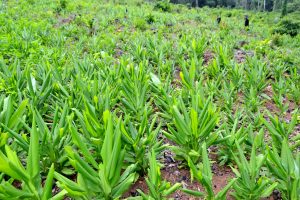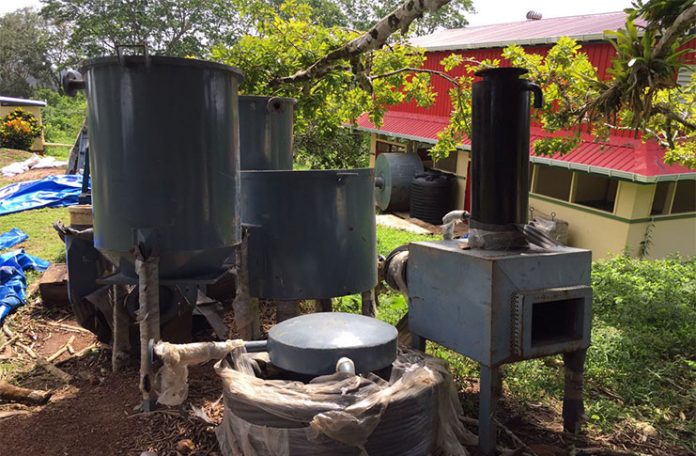Tumeric factory in Region 1 to become operational soon
Story, photos and video by Alva Solomon
WITHIN the second quarter of 2017, the turmeric processing factory which is being set-up at Hosororo Hill in the Mabaruma sub-region is expected to become operational.
The project, which residents are eagerly awaiting, is expected to provide employment to residents of the area, including general staff to operate the factory. The project will see turmeric being packaged after cultivation and marketed out of the North West District and the expectations include the provision of jobs for locals as well as the introduction of new farming methods to farmers and the exploration of the regions’ agricultural potential.

According to Faron Pearson, Research Assistant attached to the National Agricultural Extension Institute (NAREI), the factory’s machines as well as a generator is awaiting installation from engineers who are expected to travel to Guyana from India next month.
The operation includes a generator house and a storage facility where the processed turmeric will be stored before export out of the region.
NAREI’s Research Scientist of the spices programme, Ramnarace Sukhna told the Guyana Chronicle that the cultivation of spices is intended for several regions. However, the focus at the moment is Region One, including the establishment of a factory. He said that the climatic conditions as well as the soil type are best suited for the crops.
According to Sukhna, four crops- nutmeg, black-pepper, turmeric and ginger- are being cultivated on a semi-commercial scale in the region. Approximately 75 farmers have benefited from the turmeric project thus far in Region One.
Sukhna noted that the plans for marketing will see the processed turmeric being utilized by local manufacturers within the capital city and when that market is satisfied, the focus may turn to the overseas market.
“People are just a waiting the start and they are hyped about the project,” he said.
He noted that normally, the raw materials for spices are imported and then processed by the larger manufacturers but given the plans by NAREI, the situation is expected to change to the benefit of farmers.

Over at the demonstration farm, which is located on the hillsides of Hosororo, 10 acres of land have been cleared for planting of the spices and other crops. A total of 1000 black-pepper plants are appropriated for a section of the farm; at the moment 600 plants line the farm. Half acre of ginger and an acre of turmeric were also planted.

Pearson and a staff of five general workers have been manning the farm on a daily basis. He would make site visits to farms around the communities in the area and residents noted that the young man has brought life to the plant nursery. In addition, he has been commended for working beyond the nursery in the assistance he provides to farmers in the area.

